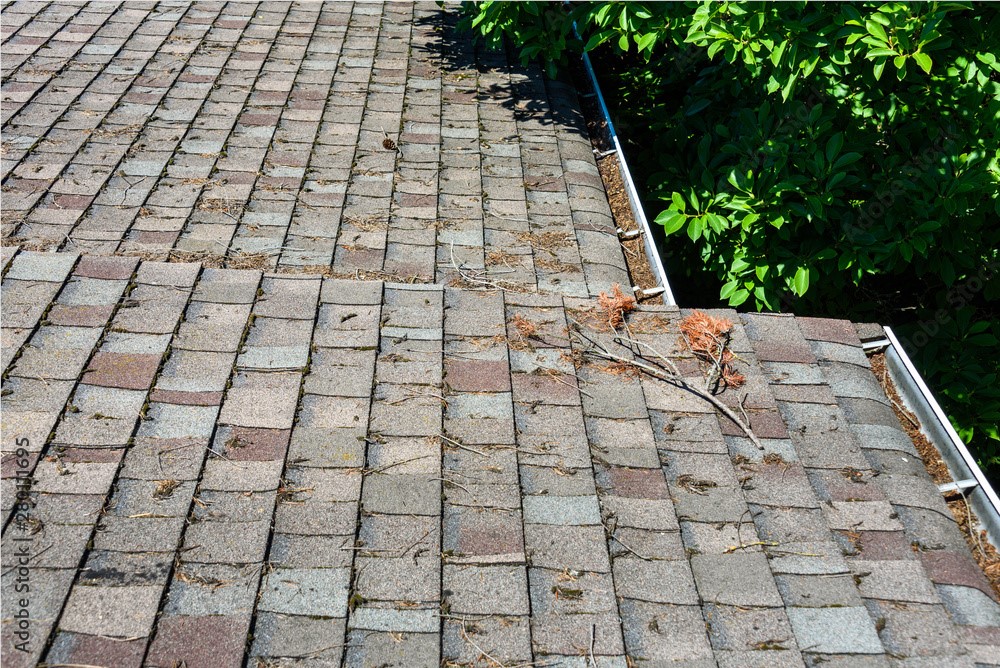
What’s the most important part of your roof?
You may be asking... there are parts to the roof?! I thought my roof was shingles!
Yes, your roof is actually a system made up of several different parts that work in unison to keep moisture out and your home safe.
Would you believe that one of the most important pieces of your roof system is the flashing? Without flashing, those areas that are susceptible to leaks would leak. It’s a pretty big task for your flashing.
In this blog, the team at Kearns Brothers will walk you through the following:
What is roof flashing
Why roof flashing can prevent water damage
What is flashing made of?
Does flashing need repaired?
How is flashing maintained?
Understanding Roof Flashing and How It Keeps Your Home Safe
We’ve established that without roof flashing, your roof would leak, but what is flashing? Flashing is a thin piece of metal that is used to direct water away from areas that could leak.
What Are The Most Common Flashing Material?
Homeowners do have different material types of flashing to choose from. You’ll find flashing options in aluminum, stainless steel, copper, and galvanized steel.
What’s the commonality between those materials? They are all slow to rust. You want your flashing to last and withstand the elements.
Some flashing materials are used in certain climates, such as stainless steel near the ocean. Saltwater can cause other metal to corrode rapidly.
Choosing copper made be a decorative choice to spruce up areas around the chimney or valleys of your roof. It is important to consider that different options have different costs for materials.
What Are The Different Types of Roof Flashing?
- Valley Flashing
Your roof valley oversees moving a lot of water off your roof. Valley flashing helps strengthen and prevent any leaks from springing up.
- Step Flashing
Step flashing is installed in steps. One row of shingles is installed and one piece of flashing. You’ll see step flashing used on the sides of dormers.
- Apron Flashing
You may encounter apron flashing on the front of a chimney or dormers. Apron flashing is usually one big piece of thin metal with a built-in expansion joint for those frigid Michigan winters and scorching summers.
- Counter Flashing
Homeowners will find counter flashing used on the sides of their chimneys. The flashing is inserted into a mortar joint and sealed off with roofing cement.
Does My Roof Have Flashing?
If anything exits outside of your roof and your roof does not leak like a faucet, then you have flashing. Flashing is typically replaced while installing a roof. There are several common places that you will find flashing.
Skylight Flashing
Skylights let plenty of light into a home and that’s the only thing you want to enter via your roof. Skylight flashing kits contain all the parts that you need to prevent interior water damage and prevent repairing the roof.
Vent Pipe Flashing
If you utilize a natural gas furnace or hot water heater, then ventilation is required by code. The vent pipe has to run out of your roof to keep you and your home safe. Since the vent pipe exits out of the roof, it must have flashing to prevent leakage.
Chimney Flashing
You will find flashing where your chimney and roof meet. This area can be difficult to flash around which is why Kearns Brothers recommends hiring a professional roofer to handle this area. The last thing you want to do is hire a professional AFTER trying DIY roof flashing repairs.
Common Roof Flashing Problems
Age. Remember, flashing is metal, and it will start to break down over the course of time. Kearns Brothers recommends roof inspections twice a year. One in the spring and another in the fall. Regular inspections get more important as your flashing ages. Ultimately, you’ll need to have a roof flashing replacement. Regular inspections will limit the surprise.
Weather. Within a year, Michigan will experience all 4 seasons. Don’t get us wrong, we love being able to experience cold weather and summer heat. With weather comes extreme events. Hail and winds can cause damage to your home resulting in roof flashing repairs.
Settling Foundation. Homes with settling foundations are commonplace. While it may seem concerning or shoddy work on your new home, that is far from the case. An expert roof flashing inspection can provide you with the next course of action to ensure that pesky leak doesn’t show up again.
Improper installation. We’ve all been there, watch a couple of Youtube videos and you can conquer the world. That is, until you get stuck. Find a trusted roofer for your roof flashing installation.
Kearns Brothers: Metro Detroit’s Leading Roof Flashing Contractors
Are you concerned about your flashing and the age of your roof? Have you spotted some moisture stains on your roof deck? As an award-winning roofing contractor with nearly 40 years' experience, we’re the trusted name in roofing throughout metro Detroit. Contact the expert home inspectors at Kearns Brothers today for your free estimate.
Tags
Subscribe to Kearns Brothers's Blog



Comments